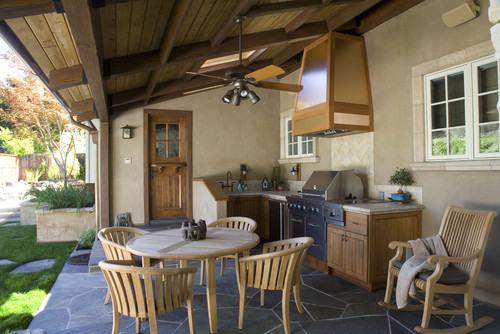Top 10 Tips to Choose a Builder and Work Well Together. Part I
Tip #5 – Be prepared to collect multiple bids.
Whether you are using one general contractor to handle the subcontractors or finding separate specialists yourself, you may not get the best price unless you accept multiple bids from different companies and individuals. These bids must include specific lists of what all the money is going for. This helps you compare one company’s labor charges against another and see discrepancies in material costs or extras added on you did not ask for.
I recommend getting 3 to 5 different bids from various builders in your area. When you receive them all back, you may be surprised to see how much they differ. This highlights the necessity of getting multiple bids to begin with. However, contractors and builders are busy people and writing up a detailed estimate takes quite a while to do well. If you asked for an estimate from five, 10, or even more companies, all you are doing is wasting not only their time but also time that could be spent actually completing your project.
Tip #6 – Always get a complete and thorough building contract.
After you have chosen the general builder perfect for your project, it is time to draw up, review, and sign the contract. This paperwork forms a legally binding agreement between the client and the builder to do specific work for a specific price.
Different builders may use various forms of contract, but I prefer one that has all the drawings and plans clearly attached and reference. This gets rid of any doubt or confusion about what tasks are included in the building project. Every aspect of the renovation or remodeling is listed, charted, and charged for clearly.
No matter how carefully you plan, there will always be a few surprises that crop up along the way. A quality contract will list multiple possibilities and describe exactly what will happen if they occur. For example, what if the client changes their mind about something after work has begun? Or what if the allotted time is insufficient to complete the project due to delays or unforeseen events?
After signing the paperwork, the contract is usually tucked away in a drawer and not bothered with again because building projects are so well organized that there is no need to check the list or the budget. However, this piece of paper is essential to keep everything legal and to help in case there is some type of disagreement or unmet expectation.
Tip #7 – Be sure all parties understand their jobs and responsibilities.
Everyone involved with the building project needs to understand what they’re supposed to do and went. For example, the contractors who handle the rough in for a kitchen or bathroom need to work around each other and together to lay the electrical, plumbing, and wastewater lines. Then, someone else comes in to put up the walls, spread the plaster, complete the tile work on the floor, and then finish everything off neatly.
This last step includes cabinetmakers installing their product, appliances being hooked up by technicians, masons finishing up the backsplash, and plumbers attaching sink faucets to the pipes inside the walls.
Some general contractors handle all of these tasks themselves or find subcontractors to do it for them. In many cases the person or company who supplied the fixture or material installs it themselves, like in the case of appliances, bathroom fixtures, and cabinetry. The only way for this process to go smoothly is to have communication between the parties so schedules line up neatly and people do not get in each other’s way.
Tip #8 – Be precise before the work begins.
The number one most important thing of any building plan and the contract is to be specific and precise.
Architects or designers made create technical drawings of floor plans and layouts complete with measurements. Building engineers can inspect the structure and make appropriate calculations that will affect the rest of the building process. These steps are important for the overall success of the renovation or remodeling, but proper communication between the homeowner and the builder is still essential.
Tell the builder everything you want and everything you expect. If, for example, you are having your kitchen renovated, reveal where the appliances are coming from, who is installing them, their size and measurements for electric or gas hookups, and what date they will arrive on. This is especially important for parts of the job you are handling yourself. If you want your bathroom floor to use reclaimed tiles from your grandmother’s house, specify in the contract who is providing the grout and adhesive and who is doing the installation.
Tip #9 – Avoid micromanaging the project yourself.
The details have been hashed out, the contract has been signed, and you have gotten yourself and your family out of the way as much as possible. Now is the time for the building contractor and subcontractors to come in and do their work.
The main builder who you sign the contract with is now responsible for his workers and every aspect of the project going forward. This includes materials delivery, scheduling, and quality of the work.
Stay out of the way. While you should feel comfortable approaching the builder directly with the question or complaint, the day-to-day handling of the job site, the workers, and the overall project are not your responsibility. You did a lot of research before you picked the perfect builder for your job and you now need to trust him to take care of every aspect of the work professionally.
Tip #10 – Use only one final inspection checklist for everything.
If disagreements are going to happen during a renovation or remodeling project, they usually occur at the end.
During the busy days and weeks of the project, everyone is focused on the job at hand, and you have confidence that everything is going on as planned. As the end nears, dozens of tiny jobs pop up necessitating a steady stream of subcontractors and tradespeople in and out of your house. The builder wants to stay on schedule and on budget and his stress level increases as he tries to juggle all the last minute tasks.
The homeowner also yearns for the day when these workmen are out of the house. They have caught glimpses of the finished project and want to begin enjoying their new room. People get frustrated with delays and tensions can rise.
The best solution to these potential problems is more organization and transparency. Discuss timelines and limits carefully, stay out of the builder’s way, and create a master inspection checklist for every person responsible for any aspect of the finished project. The final walk-through is the time to go over the specifics outlined in the contract and the plan and to write down anything that needs to be finished or fixed before you are satisfied.


















